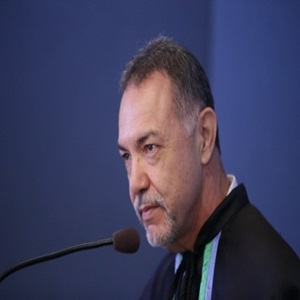Abstract Detail

Paulo Cesar De Morais
Catholic University Of Brasilia, Brazil
Abstract
cuprite (Cu2O) thin films’ properties will be presented and discussed. Moreover, the potential application of the introduced cuprite thin films as sensor for chemicals will be explored. The presented Cu2O thin films can be successfully produced from metallic copper thin films, via thermal annealing carried out at moderate temperatures (say 200 oC), for about 20 hours in air atmosphere. On its turn, the copper thin films supported onto glass (say borosilicate) substrates can be easily fabricated by thermal evaporation of the metal. The as-produced cuprite thin films may present nanometer size thickness (typically in the range from 50 nm up to 500 nm), whereas the Cu2O crystallite mean size can be found in the range from 5 nm up to 30 nm, the latter being sensitive to the film thickness. The optical bandgap remarkably depends on crystallite mean size, varying in the range from about 2.10 eV up to 2.40 eV. Quantum confinement effect is herein assumed to play a key role in the opening of the optical bandgap. Electrical properties of the as-produced cuprite thin films indicated a p-type semiconductor behavior, with carrier density of about 1014 cm-3. Finally, sensor testing the as-produced cuprite thin films demonstrated a response to ethanol gas at room temperature, with the thinner film being more sensitive to the gas detection than the thicker film, which was related to the grain size change. This talk addresses the important development of chemical sensors based on cuprite thin films, with high room temperature response, suitable for portable devices, in particular for breath ethanol testing.Biography
Professor Paulo César De Morais, PhD, was full Professor of Physics at the University of Brasilia (UnB) – Brazil up to 2013. Appointed as UnB’s (Brazil) Emeritus Professor (2014); Visiting Professor at HUST – China (2012-2015); Distinguished Professor at AHU – China (2016-2019); Full Professor at the Catholic University of Brasília (UCB) – Brazil (2018); CNPq-1A Research Fellow since 2010; 2007 Master Research Prize from UnB. He held two-years (1987-1988) post-doc position with Bell Communications Research, New Jersey – USA and received his Doctoral degree in Solid State Physics (1986) from the Federal University of Minas Gerais (UFMG) – Brazil. With more than 13,000 citations, He has published over 500 papers and more than 15 patents.
